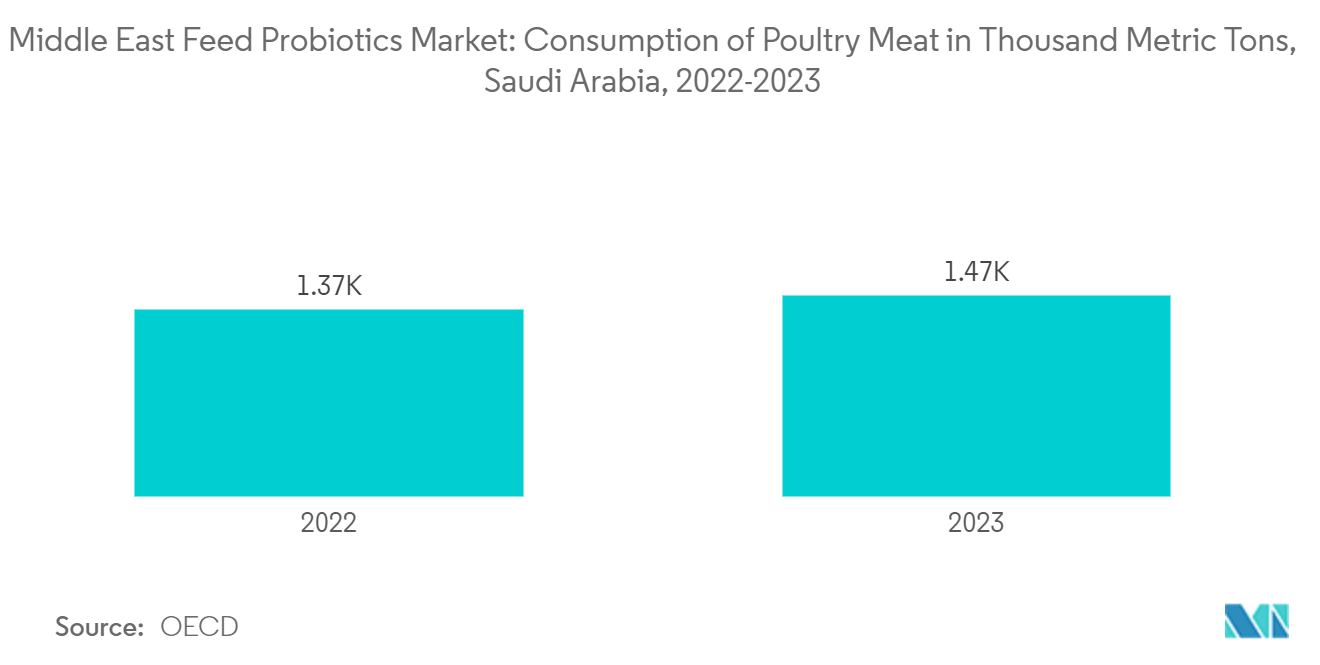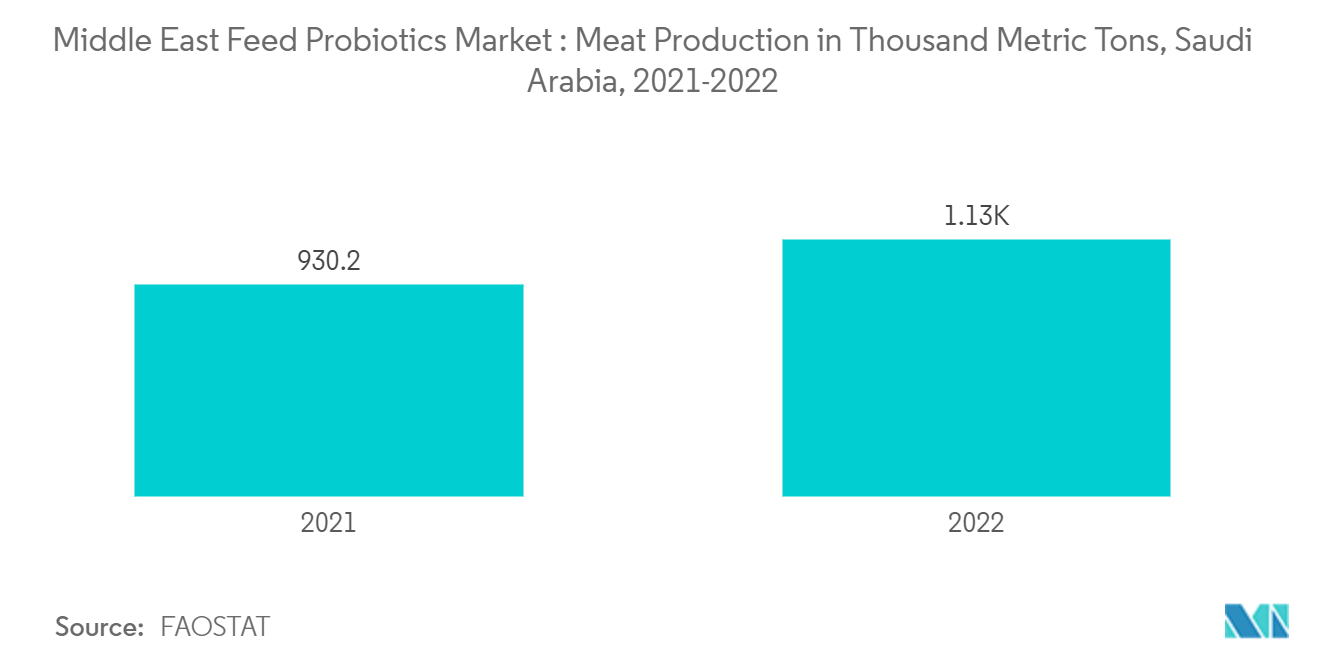Market Trends of Middle East Feed Probiotics Industry
Poultry is a Significant Segment by Application
Poultry meat is highly demanded across Middle Eastern countries and forms a part of their staple diet. According to OCED Agricultural Outlook, 2023, the consumption of poultry meat in Saudi Arabia is likely to reach 1,473 thousand metric tons from 1,373 thousand metric tons in 2020. According to the USDA, in Saudi Arabia, the constantly increased demand for chicken and their parts (such as leg quarters and breast and deboned chicken meat) in the country is mainly due to increased demand from households of working couples, the development of Shawarma restaurants, growing demand toward ready-to-cook poultry meals, and the growth of hypermarkets and supermarkets., which is anticipated to fuel the growth of feed probiotics in the country, to meet this rapidly growing meat consumption.
Besides this, the main poultry meat producers in the Middle East are Saudi Arabia, Egypt, Turkey, and Jordan, among other countries. According to the Food and Agriculture Organization, Turkey's chicken meat production was 2,138,450.72 metric tons in 2021, which increased to 2,417,995.11 metric tons in 2022, owing to the increased demand for poultry meat in Turkey. More use of feed probiotics has led to an improvement in growth, reduction in mortality, and improvement in the feed conversion efficiency of animals. Thus, Middle Eastern farmers may demand feed vitamins to produce better poultry meat quality for consumers in the Middle East.

Saudi Arabia Dominates the Market
Saudi Arabia is emerging as a key player in the probiotic feed market in the Middle East, due to its large-scale agricultural development initiatives, growing demand for sustainable farming practices, and efforts to improve food security. Saudi Arabia’s Vision 2030 emphasizes sustainable agricultural practices, aiming to increase local food production and reduce reliance on imports. The use of probiotic feed is aligned with these goals, as it reduces the need for antibiotics and enhances the overall health and productivity of livestock.
In Saudi Arabia, stringent regulations on food safety and animal health encourage using probiotics as a safer and more natural alternative to antibiotics. The government’s support for high-quality animal products also helps boost the use of probiotic feed in the country. Recently, the Consumer Protection Society (CPS) called out against the injection of antibiotics in meat and is currently working with the Saudi Food and Drug Authority (SFDA), to limit the usage of antibiotics in meat, which may eventually lead to prolific opportunities for ventures targeting the Saudi Arabian feed probiotic market.
Besides, the surging demand for livestock, including ruminants, camels, horses, and poultry, has prompted significant shifts in supply chains, all aimed at enhancing livestock product yields. Capital-intensive technologies have enabled industrial-style production of ruminant and poultry meat facilities nationwide. For instance, according to FAOSTAT, Saudi Arabia’s meat production was 930.2 thousand metric tons in 2021, which increased to 1,130.1 thousand metric tons in 2022. This surge in livestock meat production is a primary catalyst propelling the growth of the probiotic feed market.


